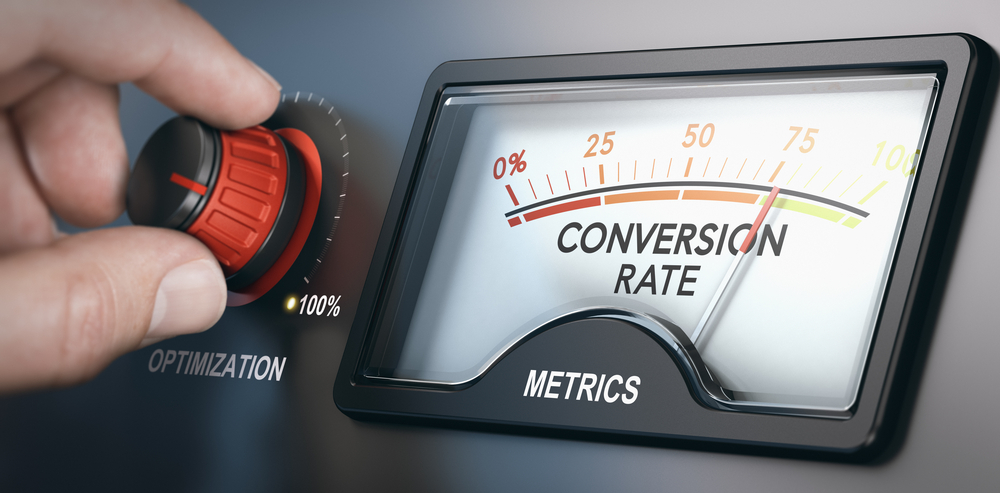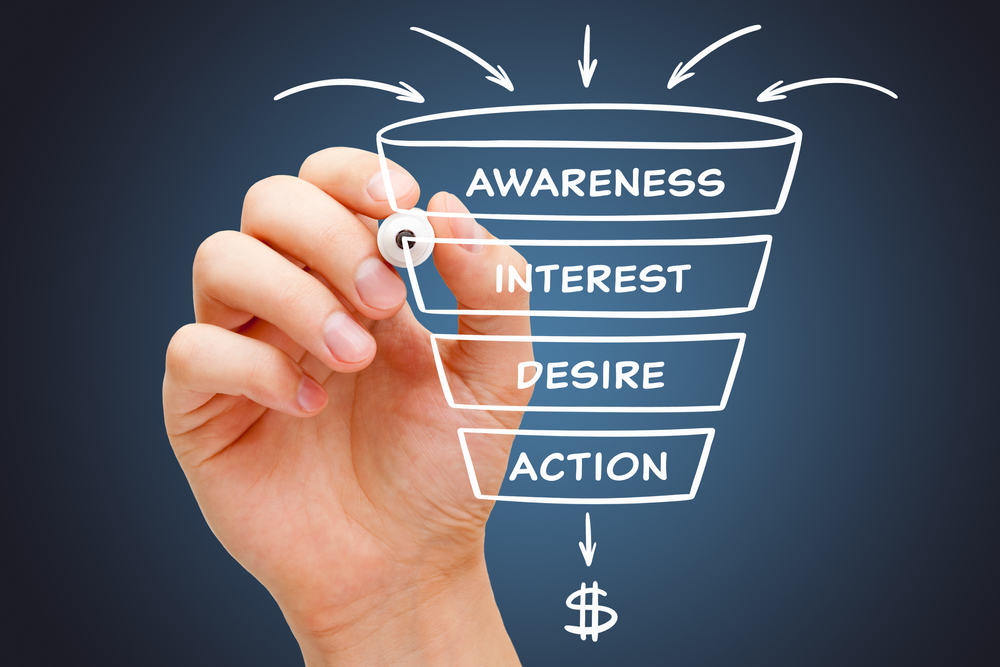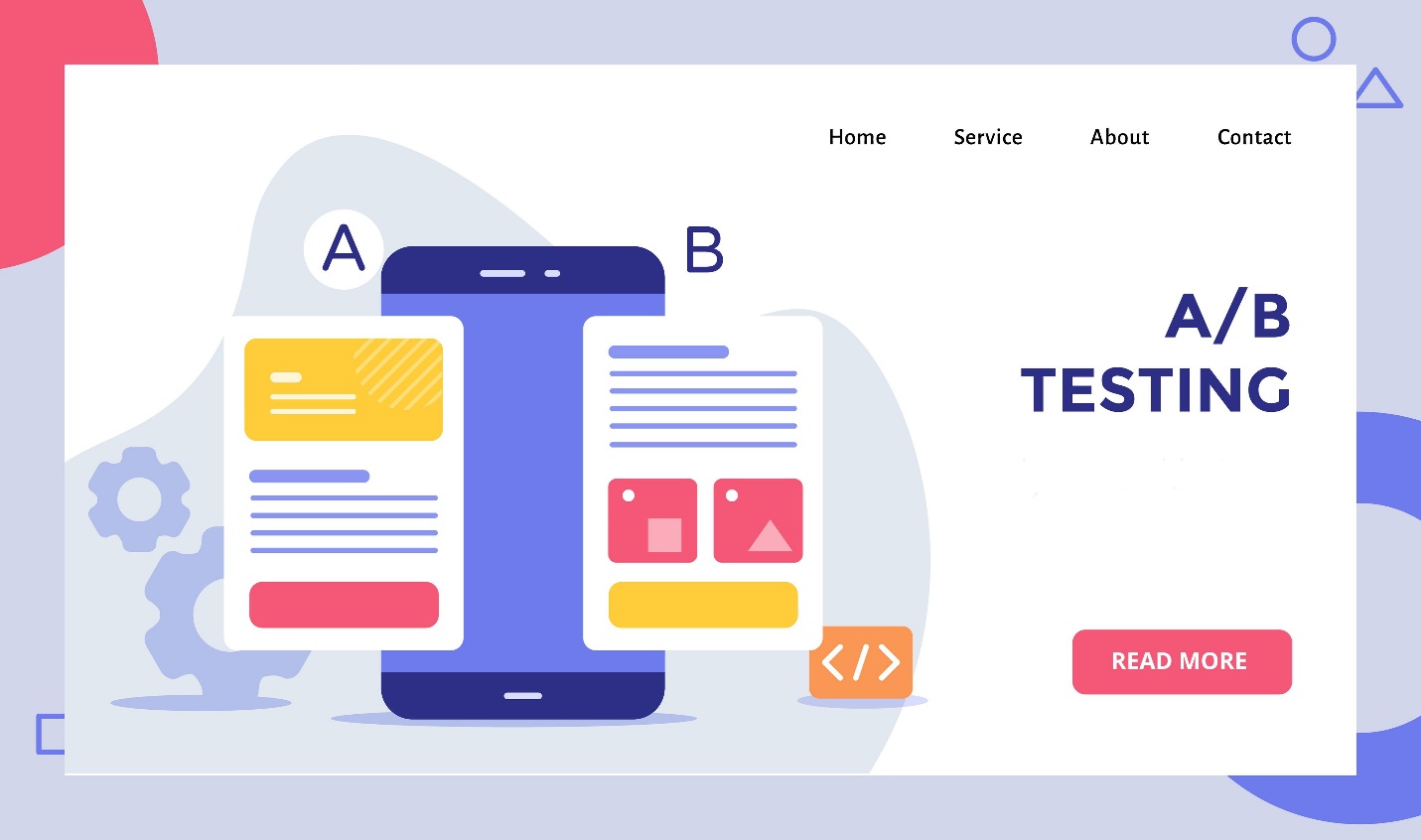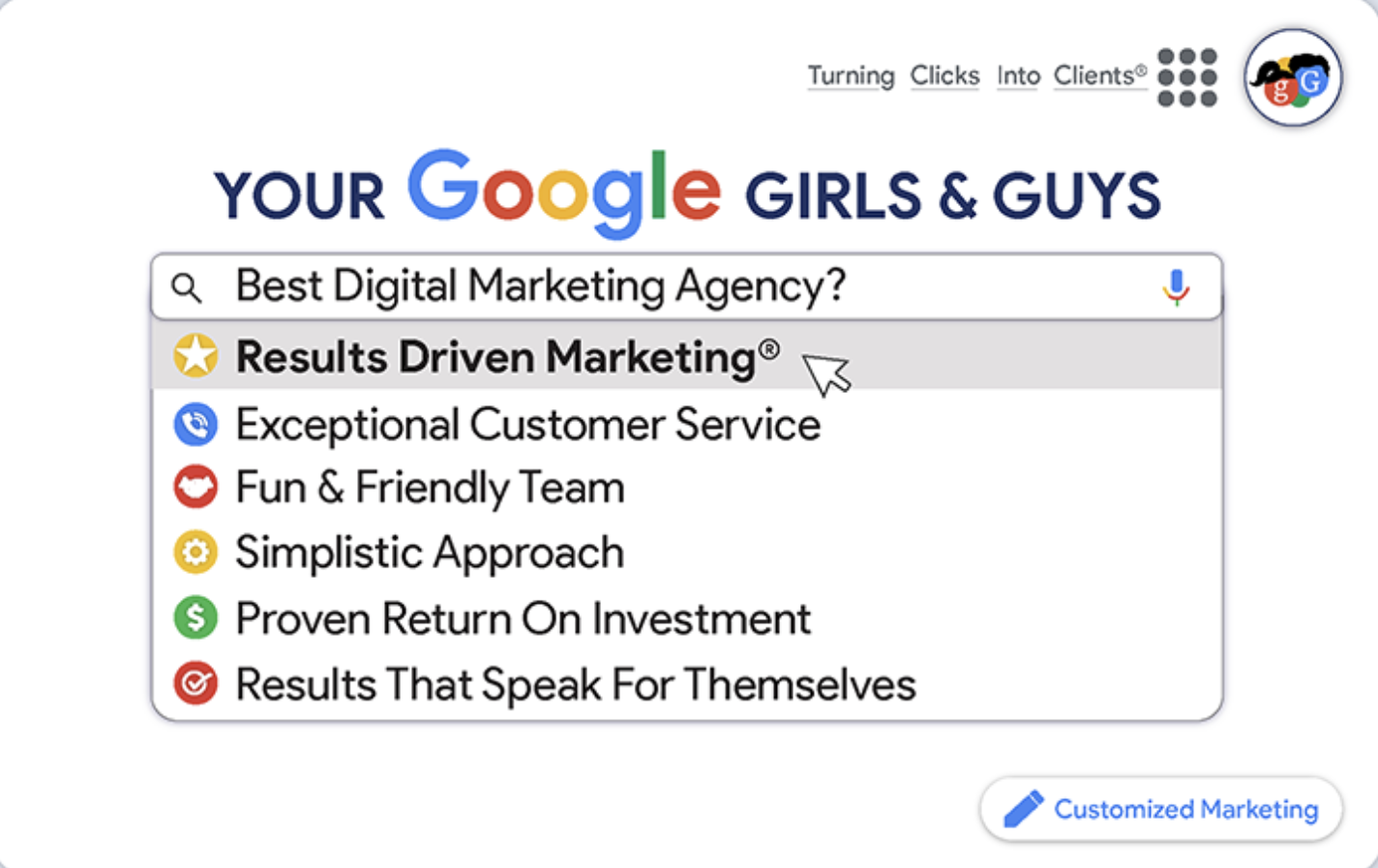Boost Your Business: The Guide to Conversion Rate Optimization
Boost Your Business: The Guide to Conversion Rate Optimization

Image: Shutterstock
Digital Marketing: Conversion Rate Optimization For 2023
Ever feel like you're throwing a party, but only a few guests show up? That's what it feels like when your website traffic is high but conversions are low. It's the online equivalent of crickets chirping in an empty room.
You've done everything right – your SEO game is strong, and people are finding their way to your site. But then nothing happens. They browse around for a bit and leave without purchasing or filling out a form.
This common dilemma has made businesses scratch their heads - until they discovered conversion rate optimization.
Let's dive into this guide on boosting your conversion rate. We'll explore why it matters and how getting to know user behavior can fine-tune the process. You'll also pick up some savvy A/B testing tricks, learn how analytics tools enhance the user experience, and discover the art of crafting persuasive copy that transforms visitors into customers.
Table of Contents:
- What is Conversion Rate Optimization?
- Understanding the Conversion Funnel
- The Importance of A/B Testing
- Analyzing User Behavior with Analytics Tools
- Optimizing Website Copy for Conversions
- Leveraging Social Proof and Social Media
- The Role of Live Chat in Conversion Rate Optimization
- Using Lead Magnets to Increase Conversions
- Driving Traffic and Boosting Conversions with SEO
- FAQs about Conversion Rate Optimization
- Conclusion
What is Conversion Rate Optimization?
Picture this. You own a store where thousands of people walk in daily, but only a handful buy something. Not the best scenario, right? This is where conversion rate optimization (CRO) comes to your rescue.
CRO is like that friendly salesperson who greets every visitor at the entrance and subtly guides them toward making a purchase. In technical terms, CRO is about boosting the number of website visitors or users who finish a particular task, such as subscribing to emails, filling out forms, or clicking that 'Buy Now' button.
Website Performance, among other things, plays an integral role in CRO, as no one likes waiting for slow-loading pages. Imagine being excited about purchasing something online and then having to wait forever for each page to load—it's frustrating.
Now, let's talk numbers. Did you know that a successful CRO can lead to highly-qualified leads? More than just generating more traffic with SEO alone because those visiting your site are already interested in your offering. Additionally, when done right—through strategies like tweaking webpage designs or altering form fields—CRO helps increase revenue while decreasing acquisition costs.

Image: Shutterstock
The Role of Rate Optimization & Conversion Optimization
Increase conversions by fine-tuning aspects such as landing page design and ad copy—that's rate optimization for you. It goes hand-in-hand with conversion optimization—the process focusing on converting existing traffic into leads or customers rather than attracting new ones—both of which are critical components of effective CRO practices.
Achieving Better Conversions: Understanding The Definition of Success
Different businesses have different definitions of successful conversions. For some, it could be a product purchase; for others, an email subscription might hold more value. So, the first step to effective CRO is defining what success looks like for your business and then optimizing every user interaction to drive them towards that goal.
So next time you see someone leaving your store without buying anything—real or virtual—you know where to improve.
Key Takeaway:
Consider conversion rate optimization (CRO) as a helpful sales rep, steering visitors to make purchases. It aims to get more folks on your site doing specific things like subscribing or buying. A well-done CRO plan not only ramps up revenue but also cuts acquisition costs by zeroing in on current traffic instead of chasing new ones. But remember, defining what you want is the starting point.

Image: Shutterstock
Understanding the Conversion Funnel
The conversion funnel is a crucial concept in understanding user behavior. Think of it as a metaphorical slide, where website visitors start at the top and hopefully land at the bottom—making a purchase or taking other desired action.
A high conversion rate signals an appealing, well-designed website. But on the flip side, slow load times or an ineffective copy can tank your rates faster than you can say "conversion optimization."
Analyzing Each Stage of The Funnel
These so-called 'funnel' stages are typically awareness, interest, decision, and action. During each stage, we analyze different aspects of user behavior to get insights into their journey through our site.
Inspiring awareness is about grabbing attention - flashy signs saying "Hey. Look over here." Interest builds when we hold that gaze for more than just fleeting moments.
Fine-Tuning Your Approach with Data Insights
At the decision stage, things heat up; now they're considering if they want what you've got. This is where your persuasion skills come into play - whether through compelling copy or irresistible offers.
Action—the final leap—is when users commit to converting from casual browsers into paying customers—or whatever goal you've set for them. This part? It's like hitting gold in old-time California without all that pesky planning business.
Note: Remember: A low conversion rate isn't always bad news—it's often simply telling us there's room for improvement somewhere along our funnel-shaped slide.
In short, Knowing how your potential customers move through these stages allows you to optimize their experience—and thus boost conversions.

The Importance of A/B Testing
A/B testing, or split testing, is crucial to conversion rate optimization (CRO). Comparing the two versions of your website, A/B testing helps to determine which resonates more with visitors.
How Split Testing Works in CRO
In an A/B test, you create two variations: 'A' as the original and 'B' as,' the variant. The variant could be anything from color changes on a call-to-action button to headline tweaks or entirely different layouts.
Your visitors are randomly assigned to either version. Their interactions provide data about which understanding essential drives more conversions - thus achieving statistical significance. This way, A/B testing becomes a critical tool in boosting conversions. A/B testing reduces guesswork and allows for data-backed decisions.
Dive into the mechanics of split testing in CRO.
Split tests focus on measuring conversion goals like sign-ups, purchases made, or forms completed. They offer insights into user preferences and behavior patterns that drive those actions. But remember. Only change one element at a time during each test; otherwise, it's hard to pinpoint what led to any observed changes in user behavior.
CRO isn't just about getting more clicks—it's about enhancing content quality based on user real-world feedback through techniques like A/B testing. As we always say, don't assume when you can analyze.
- CRO helps generate highly qualified leads, increasing revenue while lowering acquisition costs.
- It leverages enhancements such as workflow improvements alongside content upgrades facilitated by tools including but not limited to A/B tests.
Analyzing User Behavior with Analytics Tools
Regarding conversion rate optimization (CRO), understanding your user's behavior is critical to increasing conversions. By utilizing analytics tools like Google Analytics, we can better understand user behavior to optimize our CRO.
Leveraging Quantitative Data for CRO
The numbers tell the story, and in our case, quantitative data gives us invaluable insights into user interactions. These metrics include page views, bounce rates, or average session durations.
This information helps you identify conversion barriers and implement strategies to improve your conversion rates. You're not just shooting in the dark; you have concrete data guiding your efforts.
Using Qualitative Data to Understand User Behavior
While numbers give us part of the picture, qualitative data adds color and depth. It answers questions like "Why did a visitor leave without converting?" or "What motivated a customer to make a purchase?". This kind of insight is gold when it comes to refining CRO strategies.
Weaving together qualitative and quantitative aspects allows for an enriched view of user behavior. This combination paves the path toward successful optimization because now we're dealing with whole stories instead of isolated bits of information.

Image: Shutterstock
Optimizing Website Copy for Conversions
A compelling website copy is like a secret weapon in your CRO arsenal. Why, you ask? It can enhance the user experience and drive conversions through the roof.
In Q2 2023 alone, e-commerce websites in the US saw conversion rates of about 2.3%. But wait. The plot thickens. In Great Britain, that number soared to over 4%. Now we're talking.
The Magic of Words: Crafting Compelling Site Copy
A picture may be worth a thousand words, but remember those humble letters strung into sentences on your site's pages.
Your product features need to sing their praises - literally. They should tell stories that resonate with visitors' needs or desires and paint vivid images of how their lives could change if they made that purchase.
Tapping into Human Emotions
You see folks, emotions heavily influence our decisions – yes, even buying decisions (sorry, Spock). So, emotive language can be essential in nudging users towards converting.
If you make them feel good about what they're getting from you, there's your ticket to higher conversion rates.
Fine-Tuning Your Web Copy: Testing & Adjusting
No two audiences are alike. What works wonders with one crowd might fall flat with another. Therefore, testing different versions of website copy becomes crucial.
Gather data based on user interaction and adjust accordingly until your message hits home just right.
Boost your e-commerce game. US websites had a 2.3% conversion rate in Q2 2023, but the UK saw over 4%. Craft compelling site copy and tap into emotions for higher conversions. #CRO Click to Tweet
Leveraging Social Proof and Social Media
Social proof is a powerful tool for your online store. It's like the digital version of word-of-mouth recommendations, giving potential customers confidence in your products or services.
At the party, everyone enthusiastically discussed a new book that had caught their attention. The buzz around it sparks curiosity; before you know it, you're ordering that same book on your phone. That's social proof in action.
In an online context, social proof can take many forms, such as customer testimonials or reviews. Showcasing these on your website lets visitors see positive feedback from real people who have used your product or service.
The Impact of Social Media
Using platforms like Facebook, Instagram, and Twitter to create trust with potential customers by showcasing user-generated content (UGC), such as photos of satisfied customers using their purchases or tweets praising customer service experiences, is an effective way to leverage social media for conversion rate optimization (CRO).
This could be photos of happy customers using their purchases or tweets praising exceptional customer service experiences. Such UGC serves as authentic testimonials and encourages more engagement with users on these platforms, which translates into higher traffic to the site, hence boosting conversions.
Making Your Online Store Shine With User-Generated Content
User-generated content provides tangible evidence that others trust and value what you offer - think pictures shared by satisfied clients flaunting their latest buys from your store. By featuring UGC prominently on both the site itself and across various social channels – perhaps even running contests asking users to share snaps of themselves rocking their purchases – increases visibility while creating personal connections between brand and consumer.
Want to supercharge your online store's trust factor? Use the power of social proof and user-generated content. It's like word-of-mouth for the digital age, building confidence with customer testimonials, reviews, and shared snaps. #CRO #SocialMediaStrategy Click to Tweet

Image: Shutterstock
The Role of Live Chat in Conversion Rate Optimization
Have you ever chatted with a friendly sales associate at your favorite store? That's precisely what live chat does for your website. It creates a personal touch, enhances the user experience, and ultimately boosts conversion rates.
Imagine you're perusing a virtual store, and out of the blue, an inquiry springs up. You can access immediate assistance without leaving the page or making a call with a simple click. Instant help without having to leave the page or pick up the phone. It's convenient, quick, and very much appreciated by visitors.
This instant connection is what makes live chat so effective. Studies show that customers who use live chat are three times more likely to make purchases than those who don't. Talk about increasing conversions.
Improving User Experience with Live Chat
A positive user experience can be a game-changer for any business looking to increase its conversion rate optimization (CRO). Here's where live chat comes into play – it provides real-time assistance and to refine marketing strategies by adding value while offering immediate responses and personalized service.
If we look closer at these interactions, they offer invaluable insights into customer behavior as well - which products interest them most? What questions do they typically ask? This data can then be used to refine marketing strategies further and improve overall CRO.
Making Every Conversation Count
In addition to providing excellent customer service through real-time interaction, each conversation via live chat offers an opportunity to gently guide visitors toward making a purchase. But remember, it's not about being pushy – it's about helping them find what they're looking for and creating an environment that encourages conversions.
Ultimately, the role of live chat in conversion rate optimization is clear: By enhancing user experience with real-time support and personalized service, businesses can create more meaningful connections with their customers - leading to higher conversion rates.
Key Takeaway:
Live chat adds a personal touch to your website, enhancing user experience and boosting conversion rates. It provides instant help, making customers three times more likely to purchase. Plus, live chat interactions give you insights into customer behavior that can be used to refine marketing strategies and increase conversions.
Using Lead Magnets to Increase Conversions
If a free e-book or webinar has ever lured you in exchange for your email address, you've encountered a lead magnet. They're like candy to potential customers—sweet, irresistible offers that coax visitors into sharing their contact information.
Lead magnets are potent tools in the conversion optimization toolbox. When done right, they can skyrocket your conversions and fill your pipeline with highly qualified leads. But how do we get it right?
The Power of Valuable Content Offers
A successful lead magnet starts with an enticing offer that visitors can accept. It's not about tricking people—it's about giving them real value.
This could be anything from industry reports to checklists or exclusive video content—the key is that it should solve a problem for the user and be directly related to what you offer as a business.
Finding Your Perfect Lead Magnet Match
Creating the perfect lead magnet requires understanding who your audience is and what they want. The more targeted your offer, the higher quality leads you'll attract—which ultimately means better conversions.
Note: If crafting compelling offers isn't exactly up your alley yet, but this sounds appealing—don't worry. There are excellent resources available on creating killer lead magnets.
Promoting Your Lead Magnets Effectively
It's not enough to have outstanding content—you need an effective promotion strategy, too.
The best place? Right on your website. Make sure these offers are prominent across all pages.
Don't forget social media, either—a well-placed post can bring in many new subscribers. Aim to draw in prospective customers and enhance results.
Optimizing Lead Magnets for Better Conversions
The work doesn't stop once your lead magnet is live. You must constantly monitor its performance, test different approaches, and tweak it based on user feedback.
In conclusion, what are you waiting for if you still need to start using lead magnets? It's time to sweeten the deal for your visitors.
Key Takeaway:
Like free e-books or webinars, lead magnets can boost conversions by enticing visitors with valuable content. Crafting the perfect appeal means understanding your audience and their needs. Promote these offers on your website and social media for maximum reach. Remember to monitor performance and adjust based on feedback continuously.
Driving Traffic and Boosting Conversions with SEO
Search engine optimization (SEO) is more than just getting your site to appear prominently in search results; it's also a key factor in increasing conversions. It's also a critical player in boosting conversions. But how do these two elements interact?
The relationship between SEO and conversion rate optimization (CRO) is akin to fishing. Think of SEO as casting a wide net into the sea (the Internet), hoping to catch fish (website visitors). CRO, conversely Why, is like choosing the right bait for your hook - making sure that once you've got those fish close, they bite.

Image: Shutterstock
Leveraging Organic Traffic
You may ask: Why does organic traffic matter? The answer lies within its quality. Visitors who come via organic searches are more likely than others to convert because they're already interested in what you offer – they found you while searching for it.
This research by Ahrefs highlights this connection brilliantly. So remember, folks, good-quality leads are often 'organic.'
Enhancing Visibility through Search Engines
Now, let's talk visibility - being easily found on search engines can dramatically increase your chances of driving conversions.
If users can't find you when searching online or if your website appears way down on page 10 of Google results, even Sherlock Holmes might have trouble finding it. It would help if you were visible; appearing among top results means more clicks from potential customers, directly influencing your conversion rates.
Tailoring Your Website Content with Keyword Optimization
We know keywords play an essential role in SEO, but they're equally crucial in CRO. Using the right keywords helps search engines understand your content and ensures users find exactly what they want on your site.
So think of keyword optimization as a compass guiding visitors towards conversion – without it, you may just be driving traffic into a dead-end.
Just like anything in digital marketing, the real magic sparks when we blend strategies such as SEO and
Key Takeaway:
Think of SEO as casting a big net to attract site visitors, while CRO is like picking the right bait to get them hooked. Organic traffic is critical because these folks are more likely to become customers - they found you when actively looking for what you provide. Showing up on search engines can ramp up your conversions, so shoot for those top spots. And remember keyword optimization.

FAQs about Conversion Rate Optimization
What is the conversion rate optimization?
Conversion Rate Optimization, or CRO, is a strategy to increase the percentage of website visitors who take a desired action—like filling out a form or making a purchase—to generate more leads.
Is Conversion Rate Optimization worth it?
Absolutely. It helps businesses get more value from their existing traffic and customers by increasing conversions, ultimately boosting revenue.
What is the difference between SEO and CRO?
SEO focuses on improving your site's visibility in search engine results to drive traffic, while CRO aims at converting that traffic into leads or sales.
What is a good conversion rate improvement?
An improvement depends on factors like industry norms, but generally, if you get over 2% conversion rates, you're doing better than average for e-commerce sites.

Conclusion
Conversion rate optimization isn't just a buzzword. It's the secret sauce to business growth.
You've learned how it works, starting with understanding your conversion funnel. Remember: knowing user behavior is vital.
A/B testing was another gem we explored - always split test and make data-driven decisions. Use analytics tools for this; they're priceless when improving the user experience.
The power of persuasive copy should be noticed, too, as social proof and leveraging social media. Live chat also enhances conversions by offering immediate help to visitors.
Finally, remember lead magnets as an effective way to increase conversions and optimize shopping carts in e-commerce stores.
We covered lots of ground, but remember that SEO still plays a vital role in driving traffic, eventually leading to more conversions.
In essence? Conversion Rate Optimization takes effort, but its payoff is enormous: More qualified leads and increased revenue — every online business owner's dream!
And of course, the Googlers at Results Driven Marketing® are here to help you can live chat us 24 hours a day or call 215-393-8700